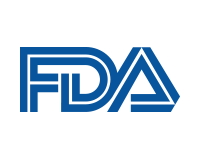U.S. Department of Health and Human Services
Date of this Version
2017
Document Type
Article
Citation
J. Appl. Toxicol. 2017.
Abstract
Cyclosporine A (CsA) is an immunosuppressive drug commonly used in organ transplant patients to prevent allograft rejections. Ketamine is a pediatric anesthetic that noncompetitively inhibits the calcium-permeable N-methyl-D-aspartic acid receptors. Adverse drug–drug interaction effects between ketamine and CsA have been reported in mammals and humans. However, the mechanism of such drug–drug interaction is unclear. We have previously reported adverse effects of combination drugs, such as verapamil/ketamine and shown the mechanism through intervention by other drugs in zebrafish embryos. Here, we show that ketamine and CsA in combination produce developmental toxicity even leading to lethality in zebrafish larvae when exposure began at 24h post-fertilization (hpf ), whereas CsA did not cause any toxicity on its own. We also demonstrate that acetyl L-carnitine (ALCAR) completely reversed the adverse effects. Both ketamine and CsA are CYP3A4 substrates. Although ketamine and CsA independently altered the expression of the hepatic marker CYP3A65, a zebrafish ortholog of human CYP3A4, both drugs together induced further increase in CYP3A65 expression. In the presence of ALCAR, however, CYP3A65 expression was normalized. ALCAR has been shown to prevent ketamine toxicity in mammal and zebrafish. In conclusion, CsA exacerbated ketamine toxicity and ALCAR reversed the effects. These results, providing evidence for the first time on the reversal of the adverse effects of CsA/ketamine interaction by ALCAR, would prove useful in addressing potential occurrences of such toxicities in humans.
Included in
Dietetics and Clinical Nutrition Commons, Health and Medical Administration Commons, Health Services Administration Commons, Pharmaceutical Preparations Commons, Pharmacy Administration, Policy and Regulation Commons


Comments
U.S. government work.